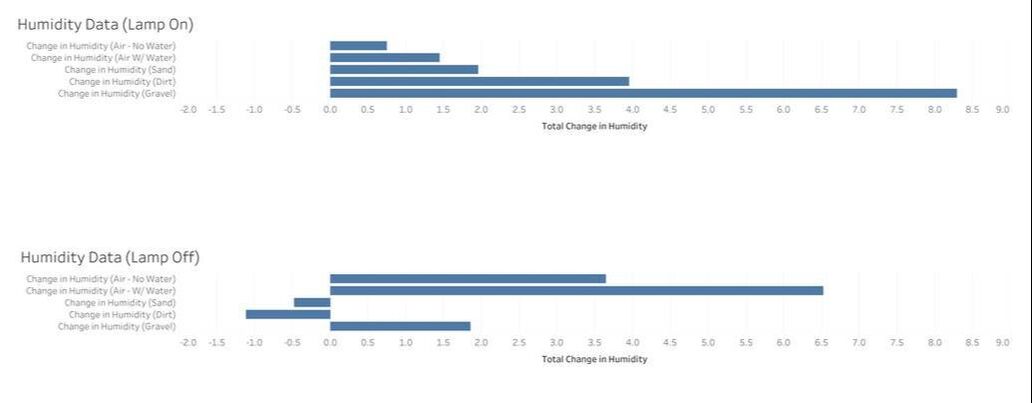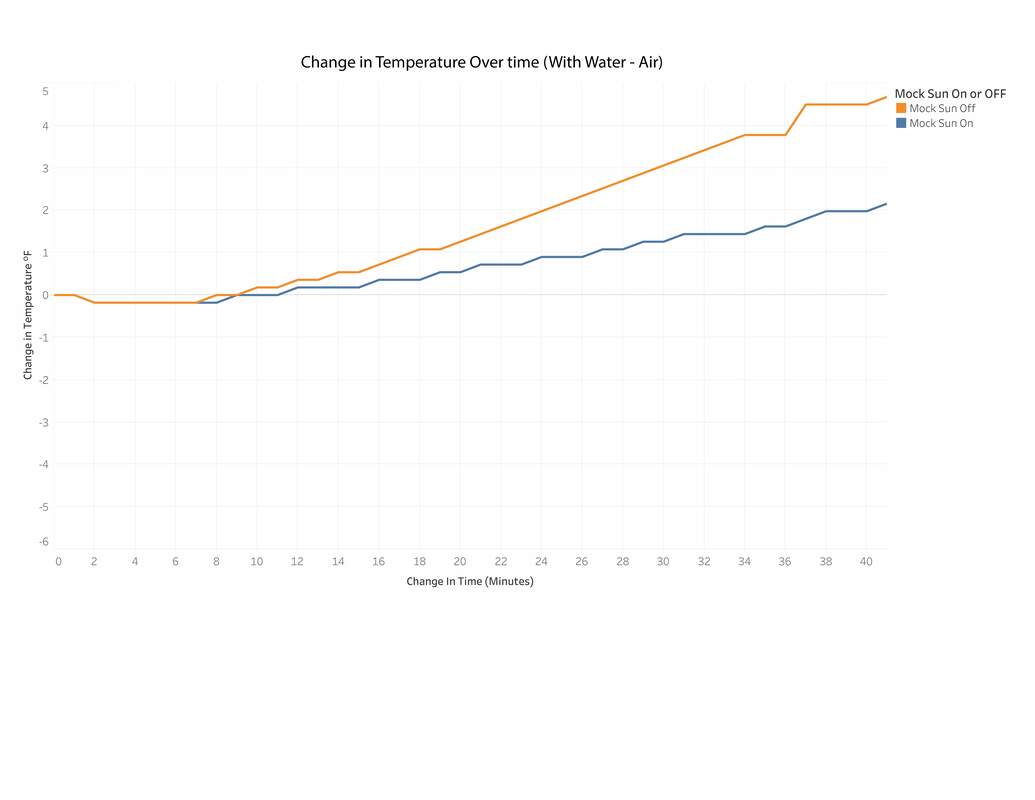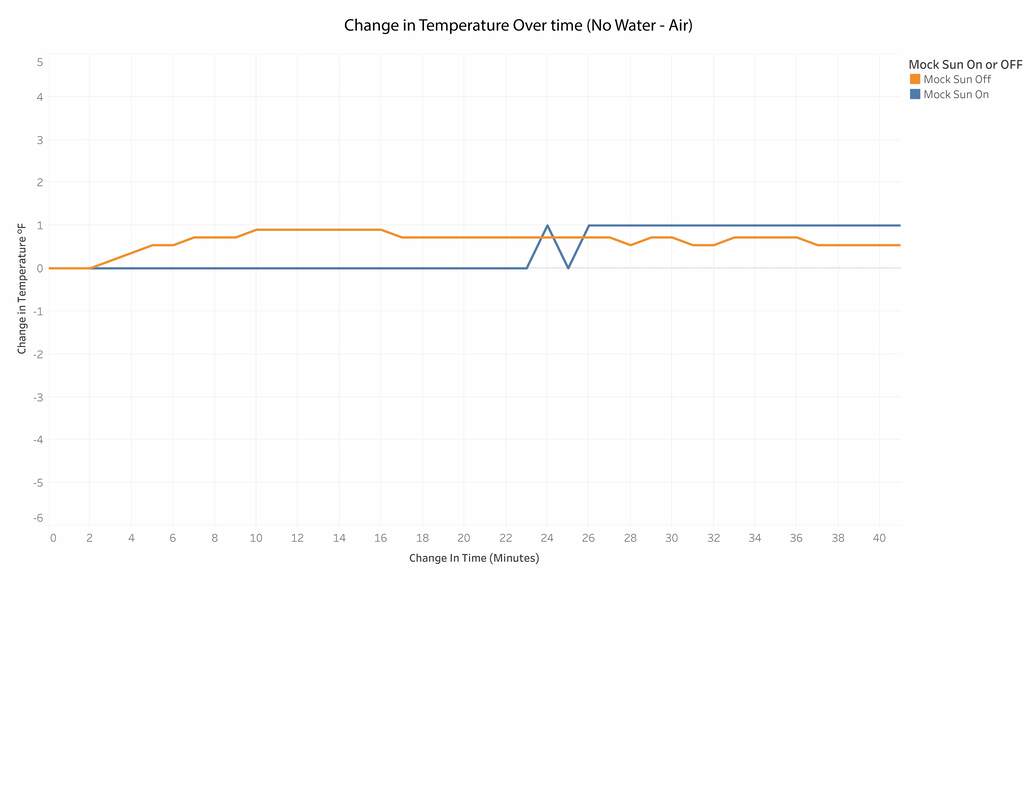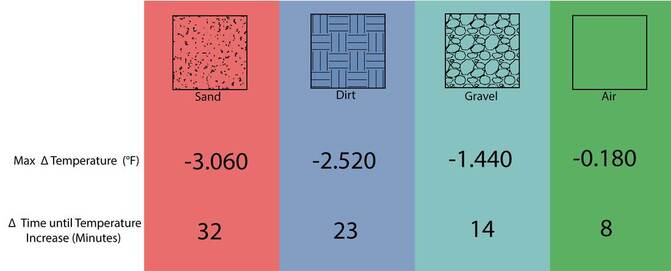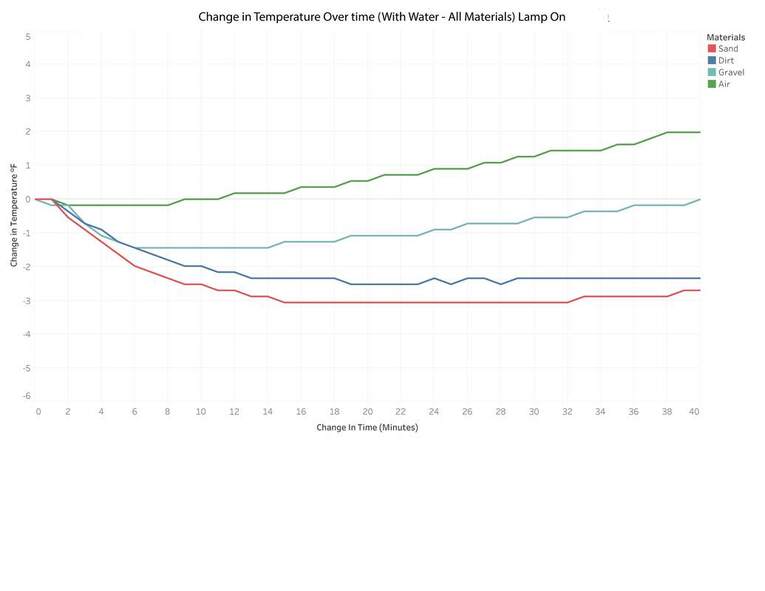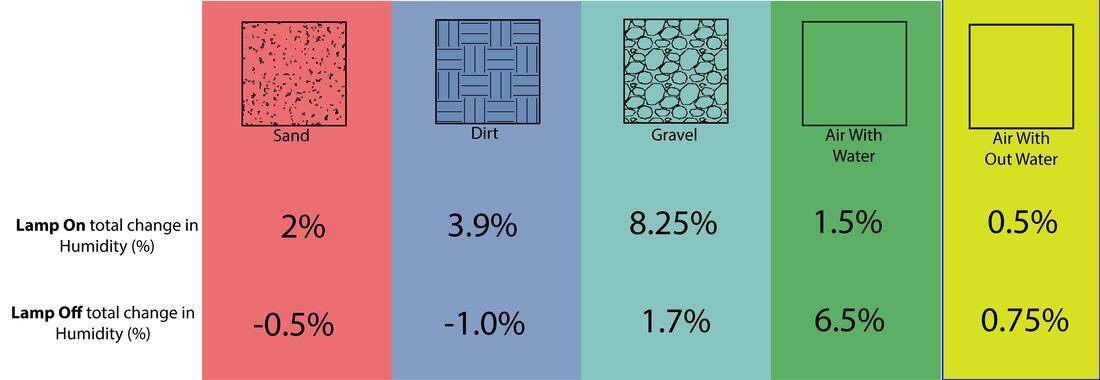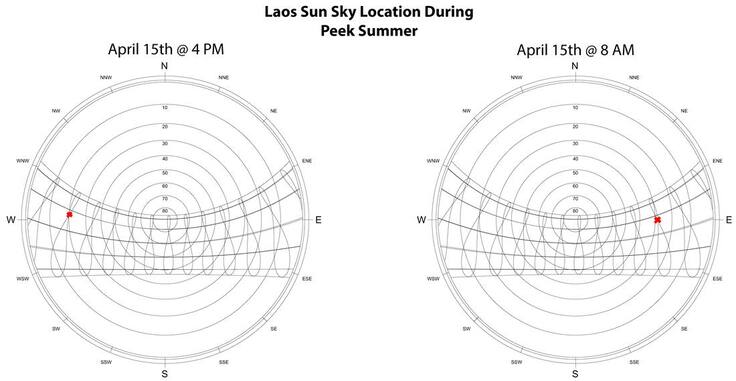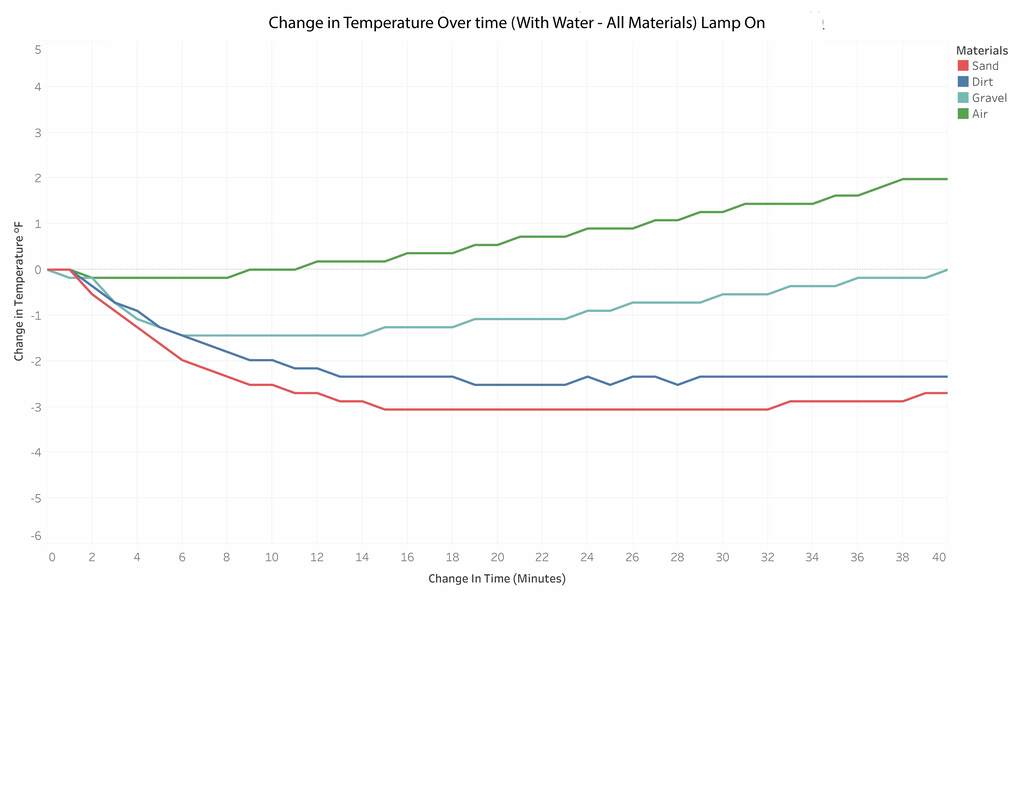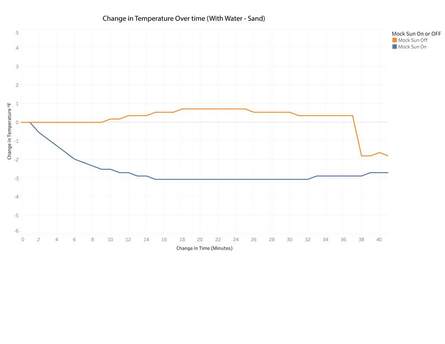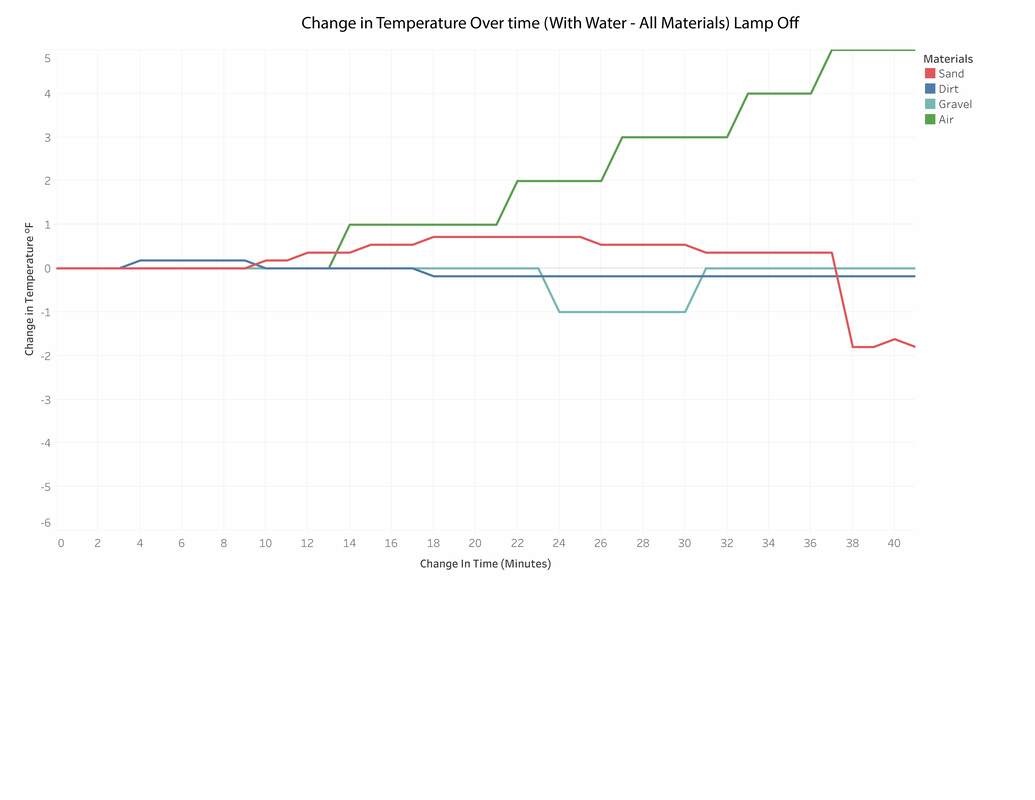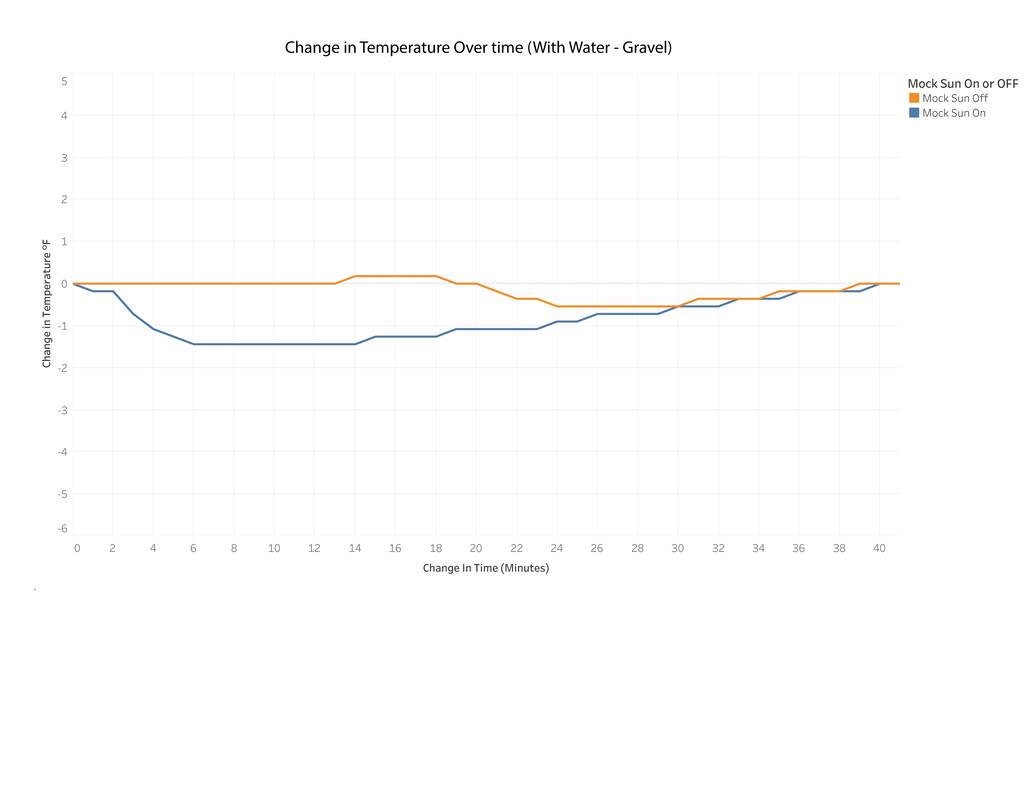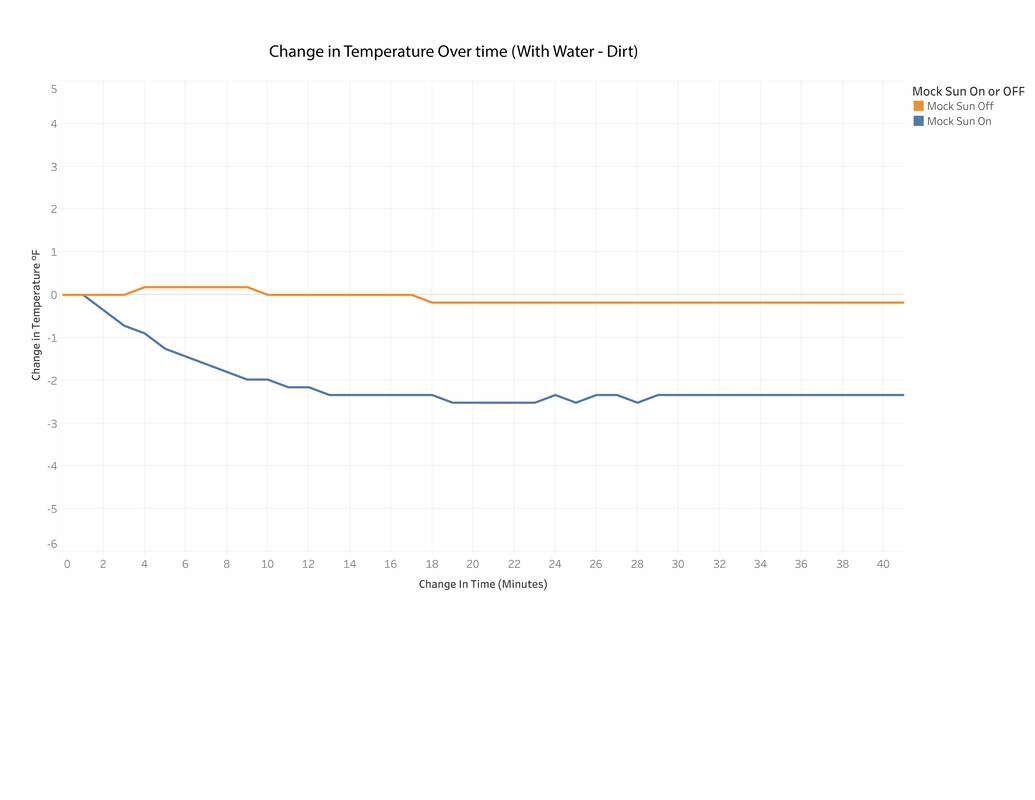Extents
Figure 14: Change in Temperature over Time (Test Material = Air, W/ & W/O Water)
Figure 15: These graph shows the data of my extents. It shows that my testing chamber is efficiently studying evaporative cooling, by reaching a hot enough temperature on the exterior of my testing chamber in order for evaporation to occur. When the lamp was turned on in the scenarios with water you can see that the the temperature is lower in its increase in temperature. While in the test without water evaporative cooling doesn't occur so the temperature in the test chamber stays relativity neutral.
Results
|
Figure 16: It shows how sand has allowed the test chamber to decrease -3.060 Degrees Fahrenheit being the coolest and longest-lasting at 32 minutes. Dirt was runner up with -2.520 Degrees Fahrenheit lasting 23 minutes, Gravel -1.440 Degrees Fahrenheit and only lasting 14 minutes. Lastly, air only decreased -0.180 Degrees Fahrenheit and only lasted 8 minutes.
|
|
Figure 17: This graph shows the comparison of 4 different materials; Air, Sand, Dirt, & Gravel, in how their use in the test chamber testing has allowed the temperature of the testing box to decrease over time. It shows how low the temperature has gotten for each test material as well as how long until the temperature begins to increase. Results show that Air is the worst at cooling the box, Gravel is next, then Dirt. Sand had the best result with the coolest temperature.
View Results Spreadsheet Here:
| |||
Concluding Thoughts
Going into this experiment I believed that sand less permeable materials will better store water in order to promote the best decrease in temperature. My experiment found that to be true. Sand had allowed the test chamber to decrease -3.060 Degrees Fahrenheit being the coolest and longest-lasting at 32 minutes. Dirt was runner up with -2.520 Degrees Fahrenheit lasting 23 minutes, Gravel -1.440 Degrees Fahrenheit and only lasting 14 minutes. Lastly, air only decreases to -0.180 Degrees Fahrenheit and only lasts 8 minutes. I do believe in order to further this research experiment on passive evaporative cooling. It would be beneficial to test the amount of water needed to create a sustained or continued decreased cool temperature, as well as a test using a thermal mass material such as brick or concrete as an exterior assembly construction material. These two tests in tandem with the interior material would create an optimized Zero energy cooling chamber.
It should be noted that while all tests were conducted in the most scientific way possible. Its possible human error may have occurred alone the way rendering my tests invalid.
It should be noted that while all tests were conducted in the most scientific way possible. Its possible human error may have occurred alone the way rendering my tests invalid.
Design Proposal
In the greater scheme of things, food spoilage is a major issue. While my test chamber has allowed for a low-tech solution to that problem that's not enough. there are so many other issues around the world. While my test chamber is an effective passive refrigeration unit it can be used for another issue. I designed this test around the tropic Asian region of Laos, the tropical region is the perfect place to further this research. To continue the solving of problems I can scale up this testing mechanism to be used to cool the inside of buildings. The low-tech nature of this design can be replicated with ease, with the vast quantities of rainwater the tropical regions receive you can store water and allow it to only be added to the wall sand-filled wall structure during peak heating hours for that side of the house.
|
|
Figure 19: During a the peek summer months in Laos we can use the Evaporative cooling method in order to cool entire homes. With simple electronics, possible done with Arduinos, we could regulate which walls get water added in order to optimize the side of the house which receives the sun most thought out the day. For instance during 8:00 am on April 15th the water will be added to the east wall, and during April 15th at 4:00 PM water will be added to the west wall.
|
Scaling up a device is simpler than it may seem. All my test conducted was under the schematics of a 2' by 2' box in order to scale up a device to be considered in a home all materials would double. In order to house a 10' by 10' house scale each wall up by 5. A single wall would now use 250 pounds of sand. While a heat lamp was used in my testing environment it is possible to test the sun for the same capabilities as the heat lamp. With the combination of a rainwater collection system and the sun, it's possible to cool a home with evaporative cooling. Further tests may be necessary but it's something that I hypothesize is possible.
Data Appendix:
|
All Materials (With Water) - Lamp On
|
All Materials (With Water) - Lamp Off
|
Humidity Data - All Materials
